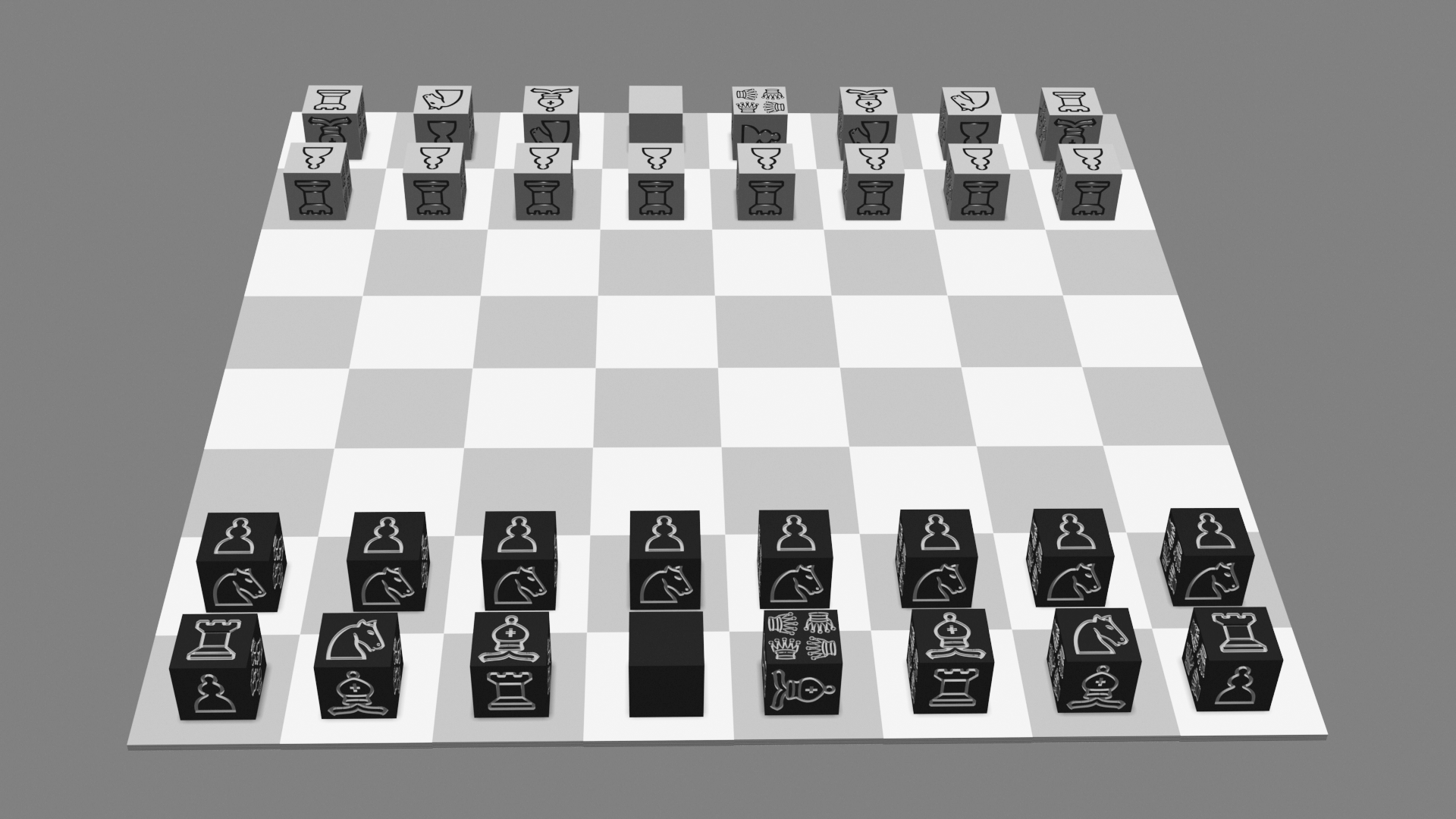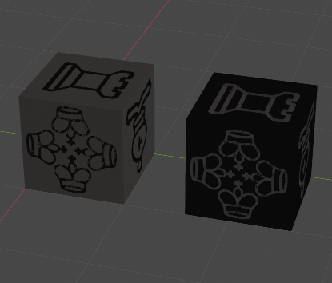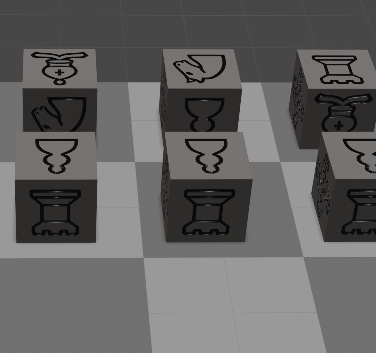Rolling Chess
A version of dice chess where the pieces are axis-aligned square 6-sided dice and the dice roll when moving across a space. When they land, they are turned in the direction they moved and by the number of spaces they have moved. If they move 1 space, the face turns once in the direction moved, if they move 2 spaces, they turn 2 faces. Each face has a pictogram of a rook, knight, pawn, bishop all aligned in a totem axis, and the opposing sides are queen (facing all four cardinal directions), or general (facing all four cardinal directions). With the exception of a blank die for the king, whose identity does not change. Dice are white-on-black and black-on-white per side. The "general" moves as a king, or if desired and agreed to at the beginning, can be assigned other classic Tamerlane identities depending on the starting rules agreed to by the player (camel, elephant, lion, etc), or any alternative chess piece or movement type.
Note that pictographic dice are not required, but the dice must have Arabic numerals in a font that depicts a definitive top and bottom for each number. The identity values can be assigned as described below under Pieces. In this case, one should never do a final rotate if they land on a Queen or General, as these sides are designed to face every direction. See image for details.
Dynamic General version: Roll an N-sided die and have a list of N-length alternative identities. When the "general" role is selected, roll the N-sided die to determine the next identity.
Setup
On a standard chess set, with a set of 15 black-on-white pictographic six-sided dice and one blank white 6-sided die, and a set of 15 white-on-black pictographic six-sided dice and one blank black 6-sided die. The board is set up like standard chess, where dice are positioned so that the "top" of the pictograph is away from the player and the "base" of the pictograph is near the player, and the dice are aligned with the board's grid axis. The dice are turned to their standard chess pictographs, ab initio in situ. The blank die is placed on the king's starting square.
Take special note of the placement of the queen, as the back face should display the Bishop laying on his right side, with his hat pointing to the right, from the side viewed from the player's perspective. The opposing team's queen should display a pawn on its forward face, aligned with the opposing player's Queen's back face. This is an important nuance to setup and must be checked before each play.
The following photo depicts the correct setup.

Pieces
Standard piece movement rules apply, and in the vanilla version of this variant, the "general" (a pictograph of a king on a 6-sided chess die) moves as a king in standard chess. In an attempt to standardize, typically each pictographic six-sided die will resemble the following layout (including the orientation of the pictographs) when unfolded:
| Rook | ||
| King (General) | Bishop | Queen |
| Knight | ||
| Pawn |

Above: correctly aligned "official" Rolling Chess dice (though variants can introduce other configurations, this is the one the game was designed around)
Rules
- Piece identity does not change until landing.
- Pieces must always be aligned to the grid. "Top" of the pictograph should always be away from the player's side, so that the base of the pictograph is always nearest the player's side. Crafters who wish to make this game may attempt to create something like a "Boggle" board to hold the dice in the right orientation.
- "Rolling" means "rolling in the direction of", for example when you move one horizontally, you "roll to the right". In the case of a pawn, the Queen's face falls on the bottom and the King's (General) face is showing, making that the identity.
- Knights (and other leapers) move in an "L" shape, not a diagonal, with the long or short side first, and this shape determines the direction of the rolling. For example, the starting move for a left-hand knight leaping the first-order pawn and landing to the right is 2 up and 1 right, meaning it becomes a rook (temporarily, but cannot be played as such) and then a king (general) as the new identity.
- Diagonal movement requires flipping first horizontally then vertically for each space traversed diagonally. This is the "over and up" rule (or "over" and "down" rule). This is true for the Bishop, or for a General.
- The King's identity never changes and his movement never changes.
- The rules for check are unchanged from standard chess.
- The game wins in a checkmate.
- The game can end in a stalemate.
Example of Pawn Opening Move
If a Pawn, from its default position, moves forward 1 space, it becomes a knight. If it moves forward 2 spaces (the initial bonus square move), it becomes a Bishop.
Example White Queen's Knight (Left side, White Side) Opening Move

The above example shows a White Queen's Knight (Left side Knight on White Side) opening move, whereby it transforms temporarily into a White Queen itself. Note that in a subsequent move at the time of landing it may be required to do an ending rotation to obey the rule of "Pieces must always be aligned to the grid."
Notes
I believe I have conceived this alternative chess version today, August 15, 2023. I wanted to share. It seems to be related to Cubic Chess (discovered while designing the rules to this game), and Crazyhorse. Cubic Chess appears in Pritchard's Encyclopedia of Chess Variants.
 This 'user submitted' page is a collaboration between the posting user and the Chess Variant Pages. Registered contributors to the Chess Variant Pages have the ability to post their own works, subject to review and editing by the Chess Variant Pages Editorial Staff.
This 'user submitted' page is a collaboration between the posting user and the Chess Variant Pages. Registered contributors to the Chess Variant Pages have the ability to post their own works, subject to review and editing by the Chess Variant Pages Editorial Staff.
By Herb Gilliland.
Last revised by Herb Gilliland.
Web page created: 2023-08-15. Web page last updated: 2023-10-22
